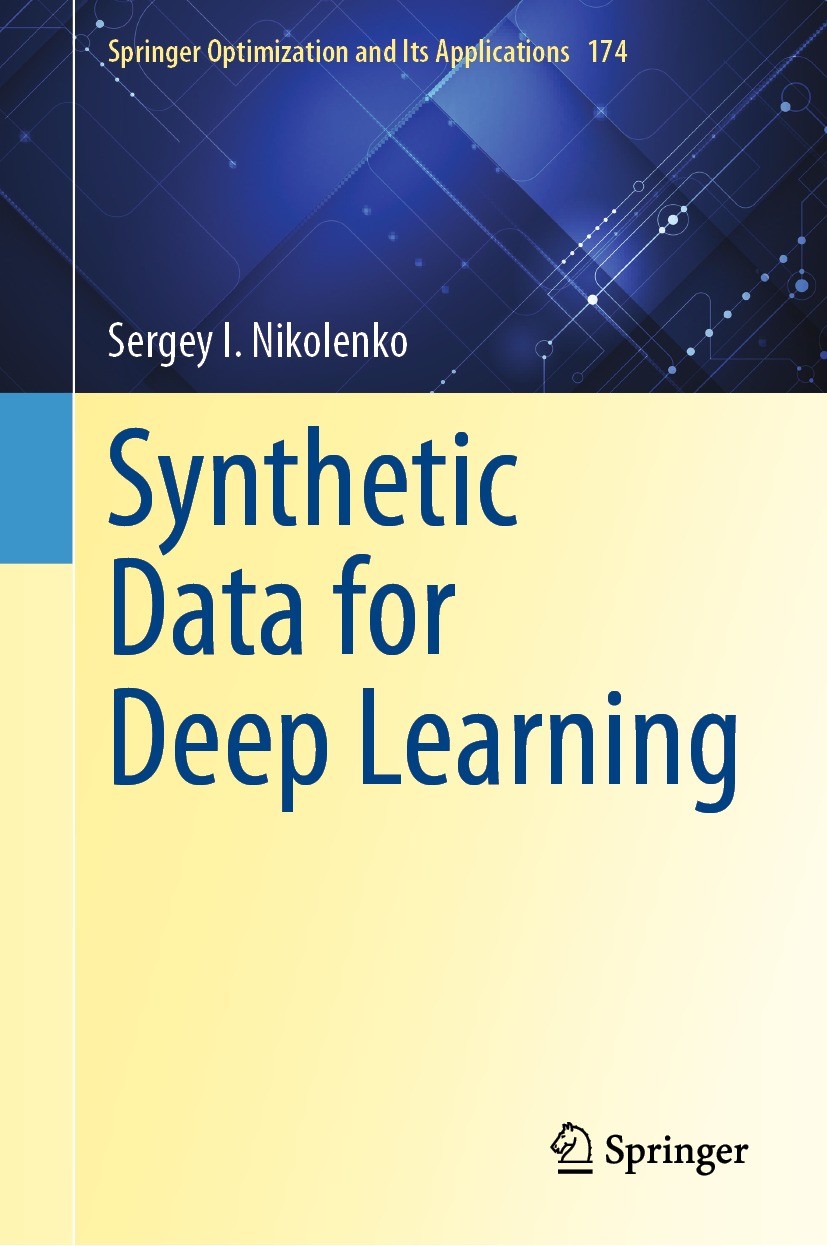Synthetic Data book
Synthetic Data for Deep Learning
S.I. Nikolenko
Abstract (Springer, 2021)
This is the first book on synthetic data for deep learning, and its breadth of coverage may render this book as the default reference on synthetic data for years to come. The book can also serve as an introduction to several other important subfields of machine learning that are seldom touched upon in other books. Machine learning as a discipline would not be possible without the inner workings of optimization at hand. The book includes the necessary sinews of optimization though the crux of the discussion centers on the increasingly popular tool for training deep learning models, namely synthetic data. It is expected that the field of synthetic data will undergo exponential growth in the near future. This book serves as a comprehensive survey of the field.
In the simplest case, synthetic data refers to computer-generated graphics used to train computer vision models. There are many more facets of synthetic data to consider. In the section on basic computer vision, the book discusses fundamental computer vision problems, both low-level (e.g., optical flow estimation) and high-level (e.g., object detection and semantic segmentation), synthetic environments and datasets for outdoor and urban scenes (autonomous driving), indoor scenes (indoor navigation), aerial navigation, and simulation environments for robotics. Additionally, it touches upon applications of synthetic data outside computer vision (in neural programming, bioinformatics, NLP, and more). It also surveys the work on improving synthetic data development and alternative ways to produce it such as GANs.
The book introduces and reviews several different approaches to synthetic data in various domains of machine learning, most notably the following fields: domain adaptation for making synthetic data more realistic and/or adapting the models to be trained on synthetic data and differential privacy for generating synthetic data with privacy guarantees. This discussion is accompanied by an introduction into generative adversarial networks (GAN) and an introduction to differential privacy.
Where to buy:
Deep Learning book
Глубокое обучение
С.И. Николенко, А.А. Кадурин, Е.О. Архангельская
Аннотация от издательства («Питер», 2017)
Перед вами — первая книга о глубоком обучении, написанная на русском языке. Глубокие модели оказались ключом, который подходит ко всем замкам сразу: новые архитектуры и алгоритмы обучения, а также увеличившиеся вычислительные мощности и появившиеся огромные наборы данных, привели к революционным прорывам в компьютерном зрении, распознавании речи, обработке естественного языка и многих других типично «человеческих» задачах машинного обучения. Эти захватывающие идеи, вся история и основные компоненты революции глубокого обучения, а также самые современные достижения этой области, доступно и интересно изложены в книге. Максимум объяснений, минимум кода, серьезный материал о машинном обучении и увлекательное изложение — в этой уникальной работе замечательных российских ученых и интеллектуалов.







